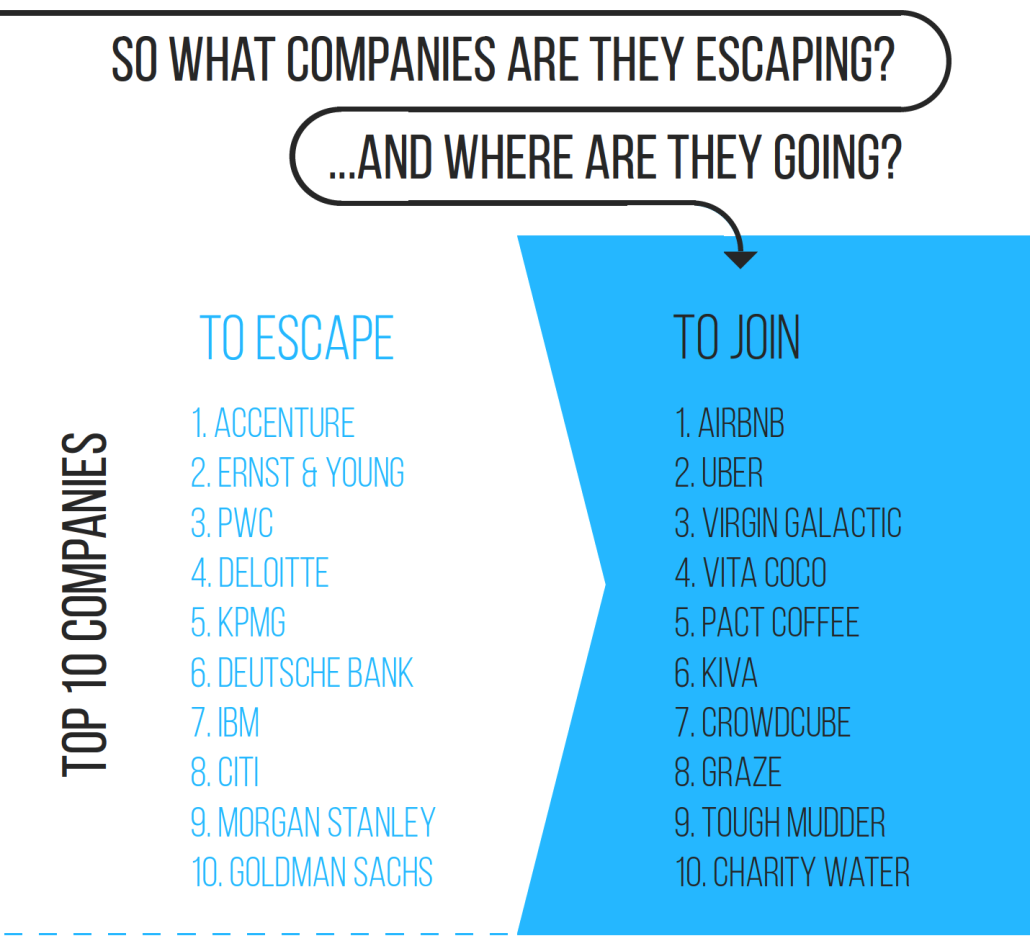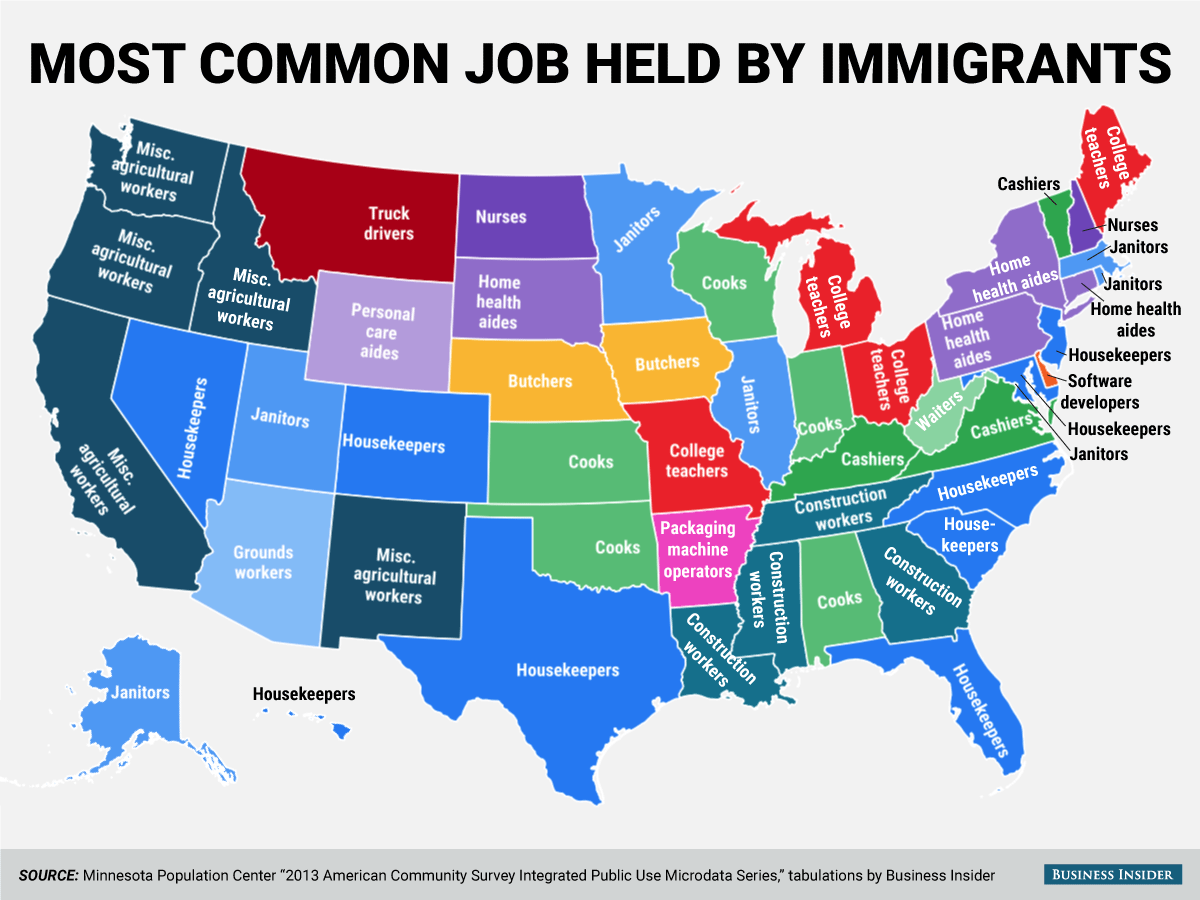Big Corporations: A Quarter of a Million Want to Leave
Career aspirations today are radically changing. Fifteen years ago, big corporations were the ultimate prestigious go-to for graduates but now they are seriously losing appeal for many young talents. People today want to build careers on their own terms.
The widening gap between people’s aspirations and what most professional jobs offer is leading to an epidemic of dissatisfaction, especially among employees in big corporations. The Escape the City initiative that has been working with disillusioned employees for over 5 years tried to identify the underlying issues of professional disaffection and to get behind the drivers of the changing career aspirations. According to the study, a quarter of a million workers in the UK want to leave big corporations in favor of companies that are more aligned with their values. Accenture, Ernst & Young and PWC are the corporates that most respondents want to leave, whereas companies like Airbnb, Uber and Virgin Galactic are at the top of people’s employer wish list.
But why is job dissatisfaction so high? And why does it culminate in big corporations like KPMG or Deloitte? The main issues that cause disaffection are the lack of personal freedom, a clear sense of purpose and a sense of positive social impact, worries about mental and physical health and the absence of creativity, innovation and entrepreneurialism at work. Half of the corporate employees that partook in the study feel that they cannot use their strengths or skills in their current jobs. Consequently, 54% cannot see themselves working in their organization in five years’ time.
Big corporations have failed to spot and catch up with the new ways of earning a living that are rapidly emerging. They still operate according to increasingly outdated paradigms that do not correspond to today’s working professionals’ values. The Escape the City survey admonishes corporates that their outdated attitude towards work is taking its toll on their image: “Perhaps, dear Corporates, you might wish to ask yourselves the questions that your employees are already answering: What is my purpose here? What difference am I making in the world? What positive mark will I leave behind after I’m gone? In a world where I could spend my days any way I choose — why should I spend them doing the work that I’m doing right now?”
It seems that big-named corporations have been living off old glory. Four of the top ten companies that workers want to escape are still to be found on the Times Top 100 Graduate Employers list, on which renowned corporations still hold 17 of the top 20 spots. While a host of talented graduates indeed flock to pursue a career within the corporate world, there is also a rapidly increasing movement away from the prestigious graduate schemes towards jobs in small businesses, start-ups and non-profit organizations. The growing importance of alternative careers is also highlighted by George Monbiot’s article in the Guardian warning students of entering a career in banking, finance or consulting rashly (How a Corporate Cult Captures and Destroys Our Best Graduates). There is indeed a trend of students moving away from these traditional career options; only 15% of Oxford graduates and 16% of Cambridge graduates now pursue finance and consultancy jobs when they leave university.
Furthermore, people’s aspirations to start their own business are increasing exponentially. Innovations in technology and communications make starting one’s own business easier and easier. And social media relentlessly celebrate every success, adventure and champagne moment creating ever higher entrepreneurial aspirations.
We find ourselves in a work revolution, in which the alignment of our own values and those of our workplace is becoming more and more important. JANZZ.jobs – the job platform that works like a dating site – provides an efficient means to find our exact match. Using the latest semantic technologies, it precisely matches profiles of job seekers, employers, freelancers and companies.




